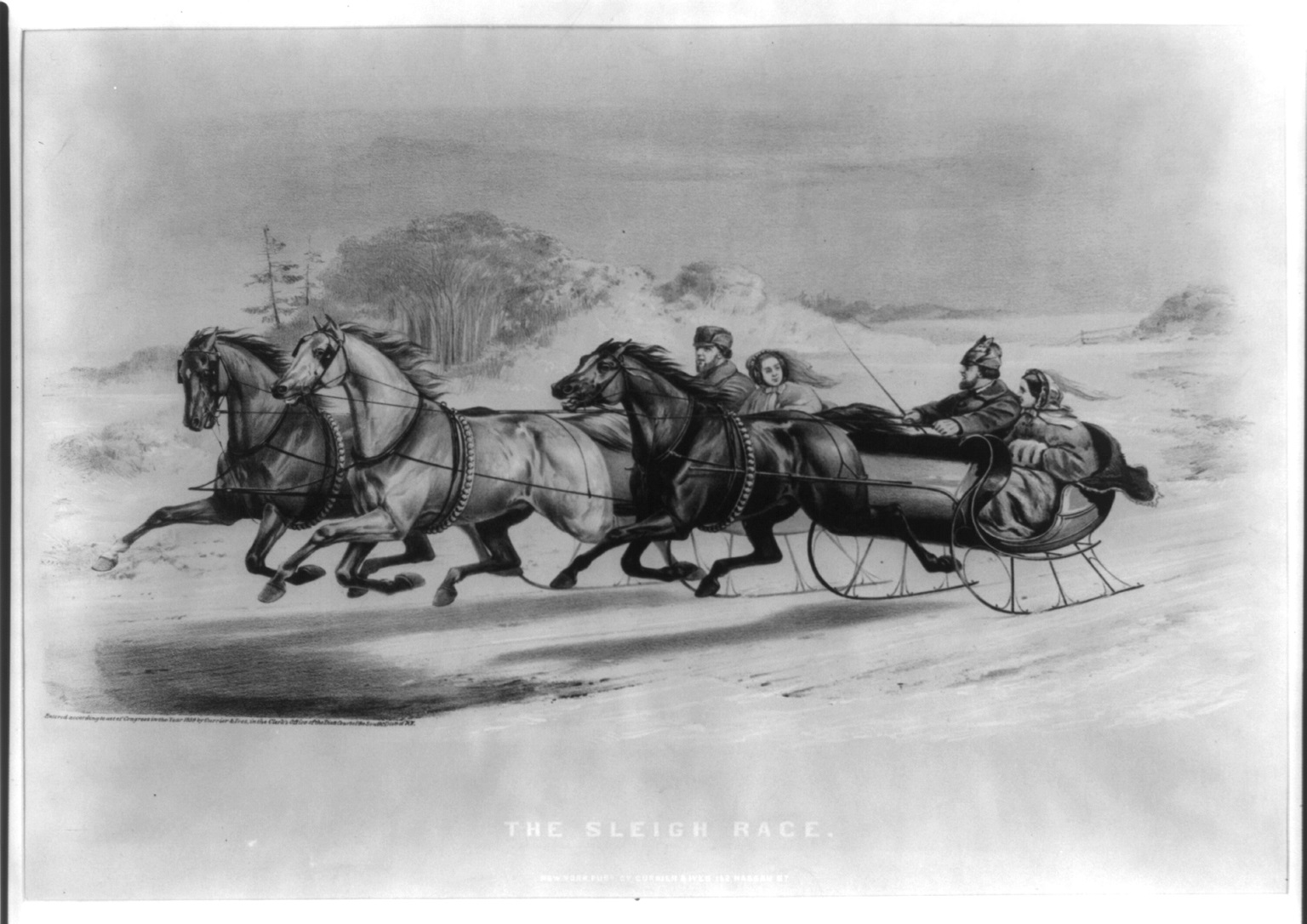 The horses resembled harnessed dragons. With each breath exhaled through their nostrils, the horses’ breaths turned to vapor resembling smoke from fire-breathing dragons. They pawed at the snow on the street, waiting anxiously.
The horses resembled harnessed dragons. With each breath exhaled through their nostrils, the horses’ breaths turned to vapor resembling smoke from fire-breathing dragons. They pawed at the snow on the street, waiting anxiously.
A sleigh with a driver sat behind each horse. The young men in the sleighs grinned at each other and at an unspoken signal, they snapped their whips and the horses leaped forward pulling their respective sleighs behind them.
While the sleighs might be typical vehicles of the day, if one driver was Frank Deatrick, then he would ride in a streamlined speedster that would draw as many appreciative glances as a Ferrari would today on the roads of Gettysburg. Deatrick’s sleigh, though costly, was fast and designed for racing.
“Suddenly there was the thud of rapidly galloping horses hoofs, and homes empties along York and Chambersburg streets. Mothers dashed swiftly to make sure their children were off the street. A passing wagon drew hurriedly to the side of the road. Heads peered from doors and windows to watch the sight–Gettysburg was having another horse race,” the Gettysburg Times reported in a 1952 article interviewing “old timers” about their childhood memories 50 years earlier.
These certainly weren’t sanctioned horse races, seeing as how the streets of Gettysburg are not a racetrack. Boys will be boys, however, and they like to race whether it’s in cars, on foot or in sleighs.
George “Pop” Hughes recalled that the races were run from the intersection of York and Hanover streets to the intersection of Springs and Buford avenues. He’d been too young to participate in any of the races at the time, but he had enjoyed watching them and wishing he could ride in one of the buggies or sleighs.
The races didn’t last long, probably because the drivers didn’t want to be around when the police arrived. They were also typically run in the morning. This was an inconvenience for residents along the impromptu racetrack, but the streets were less crowded at that hour.
The races could happen at any time of the year. If there wasn’t snow on the ground, then the drivers would race their buggies or simply sit astride their horses and urge them to go faster like a race jockey.
The next great love of young men—the car—was in existence at this time, but they were expensive, undependable and few and far between. However, 1902 was also the year before the Ford Motor Company opened and the famous Model T would start rolling off the assembly line in 1908. The Model T go travel as fast as a horse pulling a buggy and the view was much better for the driver.
Because young men have a need for speed and also tend to embrace technology, automobiles soon caught on in Adams County and before long, car races through towns replaced horse races. East Berlin had its first automobile race in 1910, according to the East Berlin Historical Preservation Society.
You might also enjoy these posts:
- Inspired: How Washington County (Md.) set Laura Hillenbrand on the track to bestsellerdom
- Mars adventurer builds “Rocket” boats and cars
- 1949: Tracking the Underground Pony Express